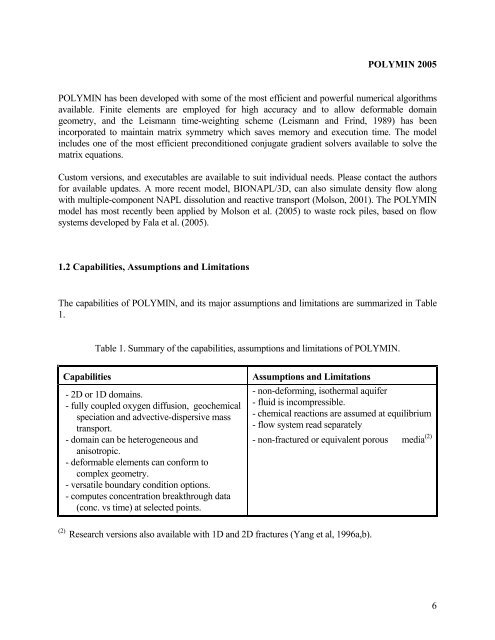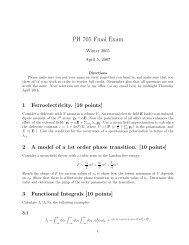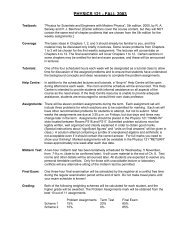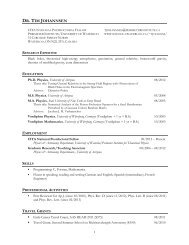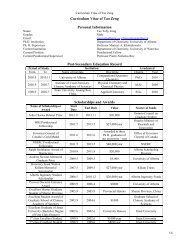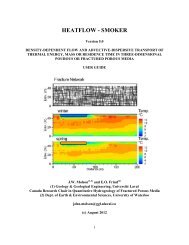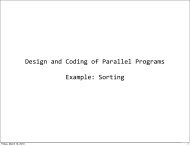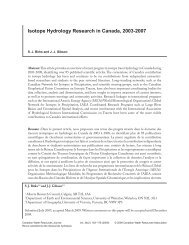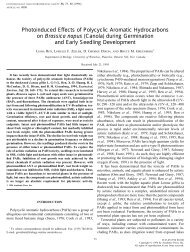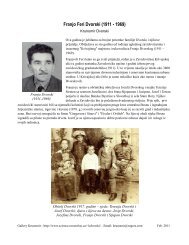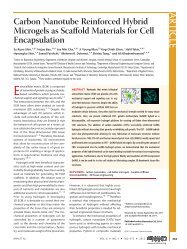POLYMIN - University of Waterloo
POLYMIN - University of Waterloo
POLYMIN - University of Waterloo
Create successful ePaper yourself
Turn your PDF publications into a flip-book with our unique Google optimized e-Paper software.
<strong>POLYMIN</strong> 2005<br />
<strong>POLYMIN</strong> has been developed with some <strong>of</strong> the most efficient and powerful numerical algorithms<br />
available. Finite elements are employed for high accuracy and to allow deformable domain<br />
geometry, and the Leismann time-weighting scheme (Leismann and Frind, 1989) has been<br />
incorporated to maintain matrix symmetry which saves memory and execution time. The model<br />
includes one <strong>of</strong> the most efficient preconditioned conjugate gradient solvers available to solve the<br />
matrix equations.<br />
Custom versions, and executables are available to suit individual needs. Please contact the authors<br />
for available updates. A more recent model, BIONAPL/3D, can also simulate density flow along<br />
with multiple-component NAPL dissolution and reactive transport (Molson, 2001). The <strong>POLYMIN</strong><br />
model has most recently been applied by Molson et al. (2005) to waste rock piles, based on flow<br />
systems developed by Fala et al. (2005).<br />
1.2 Capabilities, Assumptions and Limitations<br />
The capabilities <strong>of</strong> <strong>POLYMIN</strong>, and its major assumptions and limitations are summarized in Table<br />
1.<br />
Table 1. Summary <strong>of</strong> the capabilities, assumptions and limitations <strong>of</strong> <strong>POLYMIN</strong>.<br />
Capabilities<br />
- 2D or 1D domains.<br />
- fully coupled oxygen diffusion, geochemical<br />
speciation and advective-dispersive mass<br />
transport.<br />
- domain can be heterogeneous and<br />
anisotropic.<br />
- deformable elements can conform to<br />
complex geometry.<br />
- versatile boundary condition options.<br />
- computes concentration breakthrough data<br />
(conc. vs time) at selected points.<br />
Assumptions and Limitations<br />
- non-deforming, isothermal aquifer<br />
- fluid is incompressible.<br />
- chemical reactions are assumed at equilibrium<br />
- flow system read separately<br />
- non-fractured or equivalent porous media (2)<br />
(2)<br />
Research versions also available with 1D and 2D fractures (Yang et al, 1996a,b).<br />
6


